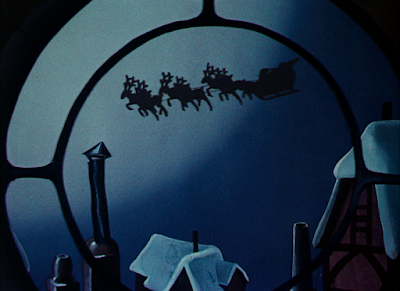He was referring to Japanese Lanterns, a 1935 effort that was part of the Rainbow Parade series for release by RKO. It was co-directed by Burt Gillett and Ted Eshbaugh. In essence, it was Gillett trying to imitate Walt Disney’s Silly Symphonies.
Like a Disney cartoon, this one has innocent young characters, a comic relief animal, a terrible threat, a happy rescue, and chuckles at the end. Oh, and an original song. It has its charms and I image the colours, even in red/blue Cinecolor, looked very good on the big screen when the cartoon was first released. Winston Sharples’ score is also good.
Film Daily reported on October 3, 1934: “To insure accuracy and add a touch of Oriental splendor, a special staff of Japanese artists has been engaged to work on ‘Japanese Lanterns,’ an original creation and newest Burt Gillett Rainbow Parade all color cartoon new in work at the Van Beuren Studio.”
Van Beuren had a good coterie of young animators in the brief Gillett era, including Carlo Vinci, Jack Zander and Bill Littlejohn, and some of the animation in this short is likeable (and impressive for Van Beuren, considering what the studio was making even three years earlier). Among the scenes I like is one toward the end of the cartoon where the comic relief stork rescues a boy and girl from a windstorm and then gathers up the Japanese lanterns that have been blown away.


The stork has exasperation sweat as it looks at a small lantern.

The stork then makes a turn toward the camera and we get a point-of-view-like shot of the stork heading toward a little twirling lantern. He gives the audience a knowing smile in the process.






Leafing through the trades, Japanese Lanterns got favourable reviews. In just about 12 months, the Van Beuren studio would be dead, thanks to RKO signing a deal with Walt Disney.
I imagine most readers of this blog (at least those who come here for animation posts) are also readers of Jerry Beck’s animation blog “Cartoon Research” and know that Steve Stanchfield and his crew are restoring the Rainbow Parades for home release, including this one which Steve posted. It’s not the best series of cartoons, but it’s good to see it’s getting some attention.










































